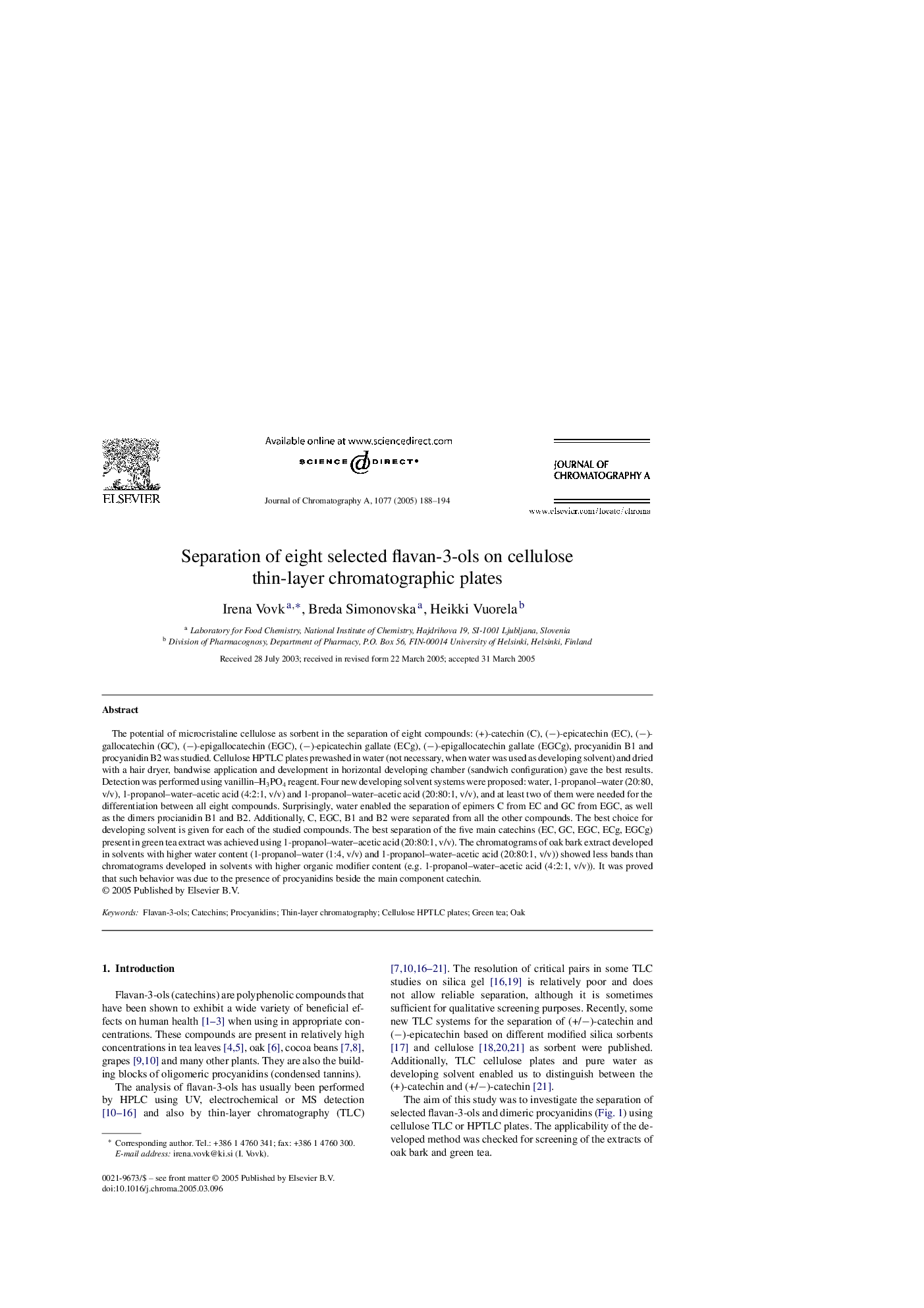| Article ID | Journal | Published Year | Pages | File Type |
|---|---|---|---|---|
| 10548088 | Journal of Chromatography A | 2005 | 7 Pages |
Abstract
The potential of microcristaline cellulose as sorbent in the separation of eight compounds: (+)-catechin (C), (â)-epicatechin (EC), (â)-gallocatechin (GC), (â)-epigallocatechin (EGC), (â)-epicatechin gallate (ECg), (â)-epigallocatechin gallate (EGCg), procyanidin B1 and procyanidin B2 was studied. Cellulose HPTLC plates prewashed in water (not necessary, when water was used as developing solvent) and dried with a hair dryer, bandwise application and development in horizontal developing chamber (sandwich configuration) gave the best results. Detection was performed using vanillin-H3PO4 reagent. Four new developing solvent systems were proposed: water, 1-propanol-water (20:80, v/v), 1-propanol-water-acetic acid (4:2:1, v/v) and 1-propanol-water-acetic acid (20:80:1, v/v), and at least two of them were needed for the differentiation between all eight compounds. Surprisingly, water enabled the separation of epimers C from EC and GC from EGC, as well as the dimers procianidin B1 and B2. Additionally, C, EGC, B1 and B2 were separated from all the other compounds. The best choice for developing solvent is given for each of the studied compounds. The best separation of the five main catechins (EC, GC, EGC, ECg, EGCg) present in green tea extract was achieved using 1-propanol-water-acetic acid (20:80:1, v/v). The chromatograms of oak bark extract developed in solvents with higher water content (1-propanol-water (1:4, v/v) and 1-propanol-water-acetic acid (20:80:1, v/v)) showed less bands than chromatograms developed in solvents with higher organic modifier content (e.g. 1-propanol-water-acetic acid (4:2:1, v/v)). It was proved that such behavior was due to the presence of procyanidins beside the main component catechin.
Related Topics
Physical Sciences and Engineering
Chemistry
Analytical Chemistry
Authors
Irena Vovk, Breda Simonovska, Heikki Vuorela,
